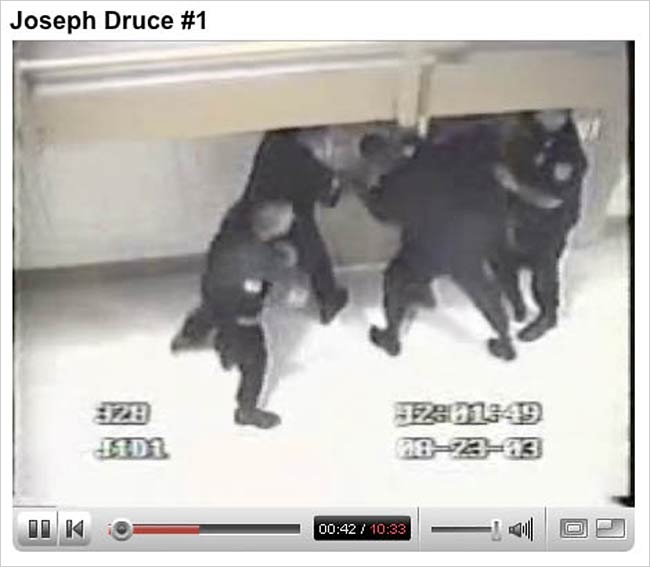By Pam Belluck
The New York Times
July 7, 2007
http://www.nytimes.com/2007/07/07/us/07priest.html?_r=1&ref=us&oref=slogin
BOSTON, July 6 — To the annals of strange Internet postings, add this one: surveillance video of guards at a federal prison struggling to open the door to a cell in which one prisoner is killing another prisoner — a convicted pedophile priest.
The victim was John J. Geoghan, a defrocked priest who became one of the most notorious symbols of the clergy sexual abuse crisis that erupted in Boston in 2002.
The killer was Joseph Druce, who was already serving a life sentence for murder when he killed Mr. Geoghan in August 2003 at the Souza-Baranowski maximum security prison. Mr. Druce, who was convicted of the murder last year, said he strangled and stomped the 68-year-old Mr. Geoghan to death because God selected him to kill pedophiles.
 |
| John J. Geoghan, a defrocked priest who was killed by a fellow inmate. Photo by Michael Dwyer |
A 10-minute video of the scene outside the cell during the killing was posted on YouTube last month. It remains on the site, and on Thursday, The Boston Herald received a handwritten note that informed the newspaper of the posted video and said, "The truth about officers allowing J. G. to die through their neglect." The note was signed "Joseph Lee Druce."
A spokeswoman for the Massachusetts Department of Corrections, Diane Wiffin, said officials were investigating how the video made its way onto the Internet.
"Inmates have no Internet access," Ms. Wiffin said. "They do not have access to security tapes."
 |
| A video image of guards trying to get into the cell. |
Under similarly mysterious circumstances in 2005, The Herald obtained a security video showing Mr. Druce acting out how he killed Mr. Geoghan and jammed the cell door with a paperback book.
The YouTube video does not show the murder or anything that took place inside the cell. It shows officers trying for several minutes to pry open the door, and ultimately dragging what appears to be Mr. Druce out of the cell and pinning him to the floor.
John LaChance, a lawyer who represented Mr. Druce at trial, and Gregory Schubert, a lawyer currently representing Mr. Druce on an expected appeal, both said they had no idea how the video was posted, and did not know whether or how Mr. Druce or family members would have had access to the tape.
Mr. LaChance said the video was one of several prison surveillance tapes played in court during either the trial or a suppression hearing. He said he had been given copies of the tapes and at one point had delivered them to the prison so Mr. Druce could watch them.
But he said Mr. Druce had objected to the rules under which he could watch them, with corrections officers preventing him from controlling the television or rewinding the tapes to certain sections.
"He was paranoid about them observing what he was observing," Mr. LaChance said, because he believed "that would project his defense."
The tapes were returned to Mr. LaChance, who later forwarded them to Mr. Schubert. He added, "I don't know why everybody's making such a huge deal of it since it was played in court."
The YouTube video does not appear to show egregious or inappropriate behavior by the officers, and the intent of posting it is unclear.
When the murder occurred, a state investigation found problems with the prison system, including that only one guard was monitoring the 26-inmate unit at the time of the killing and that cell doors were left open while inmates were taking lunch trays to a collection point. Several correction officials, including the correction commissioner, were removed from their jobs.
Ms. Wiffin said officials were looking into the possibility of asking YouTube to take the video down.
A YouTube spokeswoman, Jaime Schopflin, said that the company did not comment on specific videos, but that videos could be removed if they violated the company's content policy.
Any original material on these pages is copyright © BishopAccountability.org 2004. Reproduce freely with attribution.